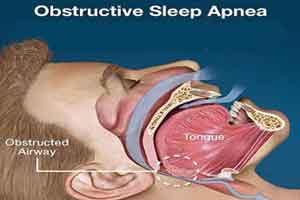- Home
- Editorial
- News
- Practice Guidelines
- Anesthesiology Guidelines
- Cancer Guidelines
- Cardiac Sciences Guidelines
- Critical Care Guidelines
- Dentistry Guidelines
- Dermatology Guidelines
- Diabetes and Endo Guidelines
- Diagnostics Guidelines
- ENT Guidelines
- Featured Practice Guidelines
- Gastroenterology Guidelines
- Geriatrics Guidelines
- Medicine Guidelines
- Nephrology Guidelines
- Neurosciences Guidelines
- Obs and Gynae Guidelines
- Ophthalmology Guidelines
- Orthopaedics Guidelines
- Paediatrics Guidelines
- Psychiatry Guidelines
- Pulmonology Guidelines
- Radiology Guidelines
- Surgery Guidelines
- Urology Guidelines
Nerve stimulator Implant - New treatment option for central sleep apnea

The U.S. Food and Drug Administration today approved a new treatment option for patients who have been diagnosed with moderate to severe central sleep apnea. The Remedē System is an implantable device that stimulates a nerve located in the chest that is responsible for sending signals to the diaphragm to stimulate breathing.
“This implantable device offers patients another treatment option for central sleep apnea,” said Tina Kiang, Ph.D., acting director of the Division of Anesthesiology, General Hospital, Respiratory, Infection Control, and Dental Devices in the FDA’s Center for Devices and Radiological Health. “Patients should speak with their healthcare providers about the benefits and risks of this new treatment compared to other available treatments.”
Sleep apnea is a disorder that causes individuals to have one or more pauses in breathing or shallow breaths during sleep. Breathing pauses can last from a few seconds to minutes. Central sleep apnea occurs when the brain fails to send signals to the diaphragm to breathe, causing an individual to stop breathing during sleep for a period of 10 seconds or more before restarting again. According to the National Institute of Health’s National Center on Sleep Disorders Research, central sleep apnea can lead to poor sleep quality and may result in serious health issues, including an increased risk for high blood pressure, heart attack, heart failure, stroke, obesity, and diabetes. Common treatment options for moderate to severe sleep apnea include medication, positive airway pressure devices (e.g., continuous positive airway pressure machine), or surgery.
The Remedē System is comprised of a battery pack surgically placed under the skin in the upper chest area and small, thin wires that are inserted into the blood vessels in the chest near the nerve (phrenic) that stimulates breathing. The system monitors the patient’s respiratory signals during sleep and stimulates the nerve to move the diaphragm and restore normal breathing.
The FDA evaluated data from 141 patients to assess the effectiveness of the Remedē System in reducing apnea-hypopnea index (AHI), a measure of the frequency and severity of apnea episodes. After six months, AHI was reduced by 50 percent or more in 51 percent of patients with an active Remedē System implanted. AHI was reduced by 11 percent in patients without an active Remedē System implanted.
The most common adverse events reported included concomitant device interaction, implant site infection, and swelling and local tissue damage or pocket erosion. The Remedē System should not be used by patients with an active infection or by patients who are known to require magnetic resonance imaging. This device is not intended for use in patients with obstructive sleep apnea, a condition in which the patient attempts to breathe, but the upper airway is partially or completely blocked.

Disclaimer: This site is primarily intended for healthcare professionals. Any content/information on this website does not replace the advice of medical and/or health professionals and should not be construed as medical/diagnostic advice/endorsement or prescription. Use of this site is subject to our terms of use, privacy policy, advertisement policy. © 2020 Minerva Medical Treatment Pvt Ltd